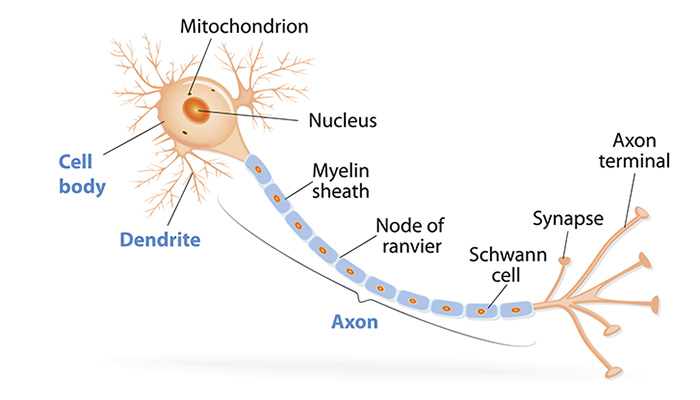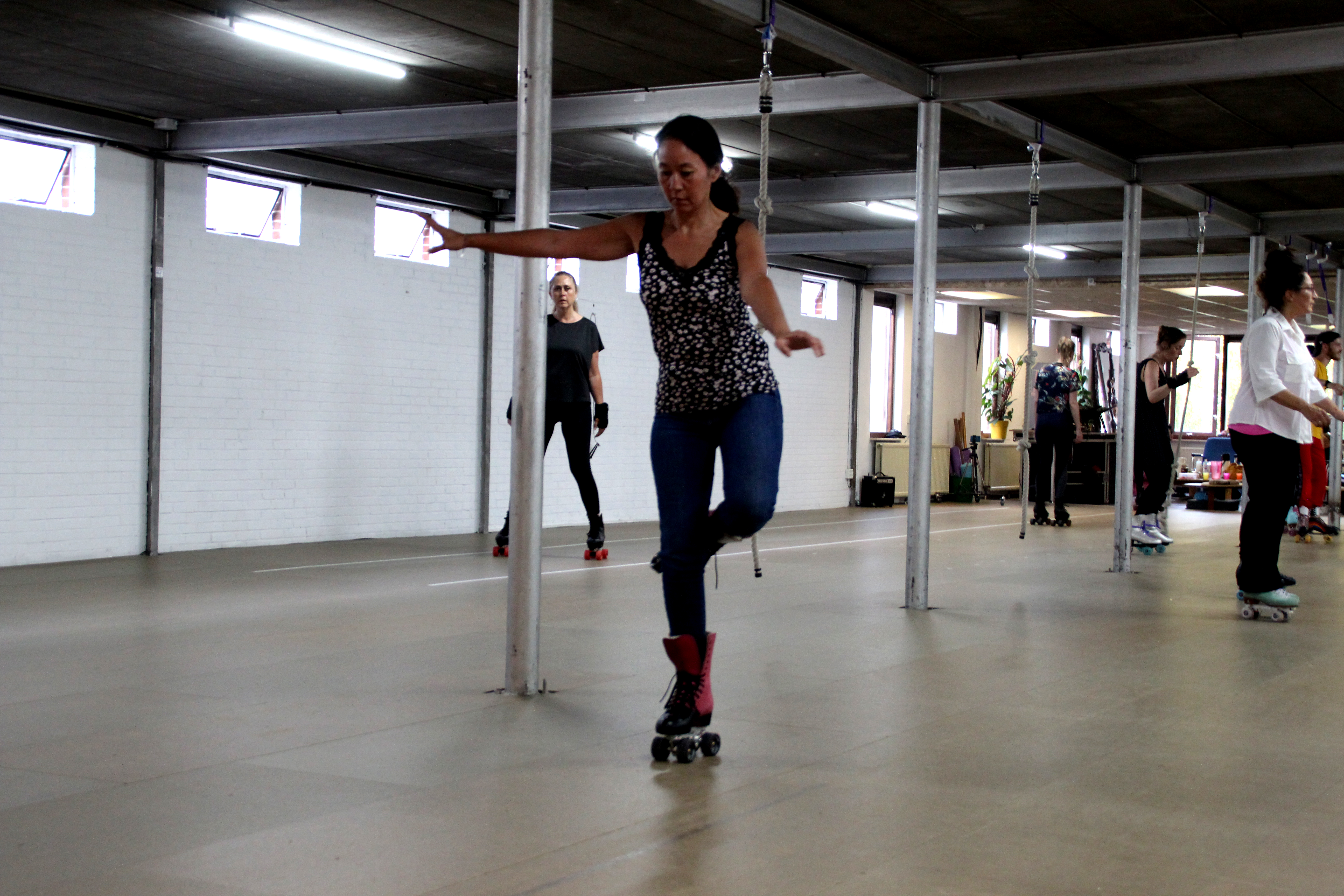The meaning of Drill it till you kill it
Geplaatst op 25-08-2021
Drill it till you kill it.
It is one of the most well known mottos connected to the very core of the Soulful Fitness Roller Skate Training system and part of the original sentence `Repetition is the mother of skill, therefore you have to drill it till you kill it.`
Let me zoom in on what this exactly means and how it is the central concept of any of our roller skate training sessions.
Repetition.
Developing steady and reliable roller skating skills takes practice; a lot of practice. Practice basically is the repetition of a single movement, technique or pattern (of movements) with the simple goal of improvement.
When practice sessions are scheduled on a regular basis with proper exercise selection, it becomes training and adaptation will definitely occur over time, which will result in performing actions easier, cleaner, safer and faster and last but not least with a lot of self-confidence.
Repetition of actions (practice) and the way patterns are practiced when roller skating, both have an interesting effect on the brain and the neural system.
A matter of grey & white.
The brain consists of two colors, grey and white matter. The grey matter is composed of cell bodies and synapses where all information coming in from sensory neurons, are constantly being processed and sorted out. The white matter consists of nerve fibers, so called axons and dendrites, coming from neurons. Each neuron has just one string or fiber and is amazingly several times thinner than a human hair (!).
In order to move, processed information in the grey area of the brain, is sent through the spinal cord to targeted tissues, through these fore mentioned super thin nerve fibers, called axons (as parts of motor neurons). It is important that the transmission of this signal –which is basically an electrical pulse - happens as fast as possible without any loss or leaking.
To prevent leaking, nerve cells produce a white lipid substance called myelin, which forms a sheath around the axon. This can be compared to how a regular household copper electrical cord is covered with an extra thick layer as insulation, to shield off the electrical signal, so it can travel throughout the full length of the cord.

Between a nerve fiber and its target tissue – let’s take muscle tissue for example - are synapses. These are little chemical pockets that contain and release neurotransmitters for stimulation, inhibition or modulation in some form, depending on the information carried by the nerve fiber, ordered by the brain.
So, if you want to pick up one leg and fold it in like in a flamingo stance, your brain processes that thought by collecting sensory information about your state of balance and posture at that moment. Then, your brain needs to know if you are safe enough to do such a daring move, meaning visual information has to be thrown in the mix as well. When you have determined there are no careless fools around, no dogs running wild and little (or big) kids potentially knocking you over, your upper leg muscles need to be signaled to raise your knee with controlled core muscles, a straight back, balanced arms and if you can pull it off, a little smile.
Now all of the above sounds like a long and difficult story, but it all transpires in a matter of milliseconds. And there’s no guarantee the execution of that thought goes perfectly well, or in one take. There will be several tries, some adjusting and multiple uncountable times of muscle contraction and relaxation, before reaching a clean stance or even half of what it eventually should be. The thought that initiates the attempt is where it starts. Repetition of practice is needed to get to significant, clean and repeatable results.

- In this picture, Debbie during one of her first attempts doing a little travel in Flamingo position. Only thing missing here is that little smile, as she feared for her life. Needless to say, there was no reason to fear and it was a perfect first try (with only one fool around who made her do this.)
Myelin magic.
As mentioned, nerve fibers are extremely thin and that’s all the more mind blowing considering the important task they have of transferring vital information. The larger the diameter of a nerve fiber though, the higher the speed of signal travelling. The production of that protective sheath around the fiber by the nerve cells, is called myelination. Myelination of a nerve fiber not only insulates the fiber as a protective layer, it also enlarges the diameter, thus increasing speed capacity.
Repetitive practice leads to more production of myelin. So, drilling moves, techniques and patterns indeed causes significant demonstrable neural adaptations, leading to visible improvements, fluency and an increased sense of flow.
Frequency of practice.
The general idea is to practice as much as you can, right? The more you practice, the faster you adapt. That is true for the most part, although there are some more factors that come into play, to make that statement entirely correct. The intensity of your workout for example plays a very big role. You can change the intensity per session, but you need to reach certain limits in order to sort out benefits and measurable training effects.
All these different ongoing hashtags (d.d.2021) referring to some form of skating 365 days or every day skate challenges are all pretty smart marketing moves. One can only imagine how these hashtags alone, have contributed to excellent product branding across all digital platforms, let alone super boost real time sales.
But the notion that skating every day would somehow be more beneficial to skill development than taking days off, can easily be put in perspective by common sense, backed up with solid and well established physiological laws.
Resting time is equally as important as training time and the ratio is not necessarily 50/50. Any first year physical therapy student or physical trainer will be able to tell you exactly that. And I`m pretty sure, they will be happy to add to their explanation, the importance and effects of bringing your training to the point of failure, when you want to achieve any significant training effect.
Your system is triggered to change, grow and adapt by putting it under pressure, preferably until you fail. Fail to keep proper form, fail to resist, or fail to stay on beat or in the groove. So this automatically points out 3 types of failure; form failure, tolerance failure an tempo failure. If you want to change to improve, you need to hit at least one of these three types of failure. But here’s the thing: significant adaptation occurs in resting mode, not during training time. If you don’t build in enough resting time, the probability rate of overtraining increases massively, which can lead to all sorts of unpleasant consequences.
Resting time basically means recovery time. When you initiate your training, your baseline is where you are at that particular moment. The following training stimulus needs to be strong enough to sort out significant effect to upgrade that earlier set baseline.
In case of muscle tissue it’s pretty clear and well known. You take a certain weight and you wear out a particular muscle group until it burns like hell and you can’t handle it anymore (tolerance failure); or you simply can’t contract anymore without losing proper pattern of movement (form failure); or when it’s a light weight, light movement with (always) strict form, you can’t keep up with the tempo anymore (tempo failure).
Training to failure on muscle level usually leads to micro tissue damage. This needs to heal in resting time. The body has a tendency to repair the damage by upgrading the baseline. When recovery time is too short, the tissue is not fully restored to handle any load in a following training session (delayed muscle soreness after workouts can be an indication of that).
When there`s an injury lingering, different types of tissue could be involved, such as tendons, ligaments and cartilage. All these different structures have a different recovery rate, which makes it even more important to respect substantial recovery time.
In case of the brain, it’s slightly different but the same principle of rest still stands. Apart from the fact you don’t actually sustain brain damage from any type of physical training, your brain also needs resting time from strenuous work. When you are learning new patterns of movements, or trying to redirect old patterns, it takes a while for the brain to wire and rewire neural pathways, besides some other interesting and very beneficial adaptations to different structures in the brain.
Repetition is the mother of skill most definitely. But the grandmother here without a doubt is ‘rest’, claiming the fun part like most grandmothers do, as in providing unlimited hugs and cookies. So, resting time is enhanced with accumulating good information on your workouts and providing the body with balanced nutrition.
So, is it bad to skate every day?
Nope. With moderate intensity, you’ll keep up your maintenance level at that moment, with perhaps very, very, very small incremental progress. Roller skating is a delicious treat when you're just flowing with no specific goals than just flowing itself and the comfort of just being on wheels will definitely grow on you faster, the higher the frequency. So if you can’t help yourself and badly need your fix, then please, by all means, go get it!
But do keep in mind, that moderation doesn’t morph into solid results. It doesn’t crush limits, break barriers, feed perseverance and elevate you to your next plateau. Going full in and all out on a regular basis with enough resting days between sessions, will significantly impact your skill development in euphoric ways.
Consistency is key.
It’s way better and more accurate to count your actual skating time, instead of your skating days and then keep track of the time in between your sessions. How to avoid the feeling of `hitting your ceiling’, or getting stuck in doing the same things, is to structure your training sessions. A good training or exercise program, is to challenge you with good exercise selection, trackable progression and to keep you motivated and excited to do more, so to build consistency. In this way, patterns of conscious and unconscious behavior and reflexes are touched extensively and development of intrinsic tools is an absolute guarantee.
Consistency in all this is far more important than ramping up frequency. When you do level up your frequency, it’s advisable to change intensity per session to avoid injuries. And in addition to this, exchange or supplement your skating sessions with a run, a sprint, a good walk or some weight resistance training, so the body is worked in different angles for overall development.
So, with all that said, I end in full circle:
‘Mother is the repetition of skill. Therefore you have to drill it till you kill it, until you reach that beautiful state of free flow, where the body, mind and soul become the ONENESS OF YOU’.
Brian B. Kanhai Soulful Fitness Es Quint Foundation.
Kneep Deep
Going knee deep into the weeds on how far to bend the knees. As the human body works as a very sophisticated and fully integrated entity, it’s foolish to point out a single part that would be considered crucial for going through our day to day habits and activities.
Lees meerMoving from drill to skill
Moving from drill to skill. The primary way and focus within the Soulful Fitness Roller Skate Training system, is the dilige...
Lees meer
